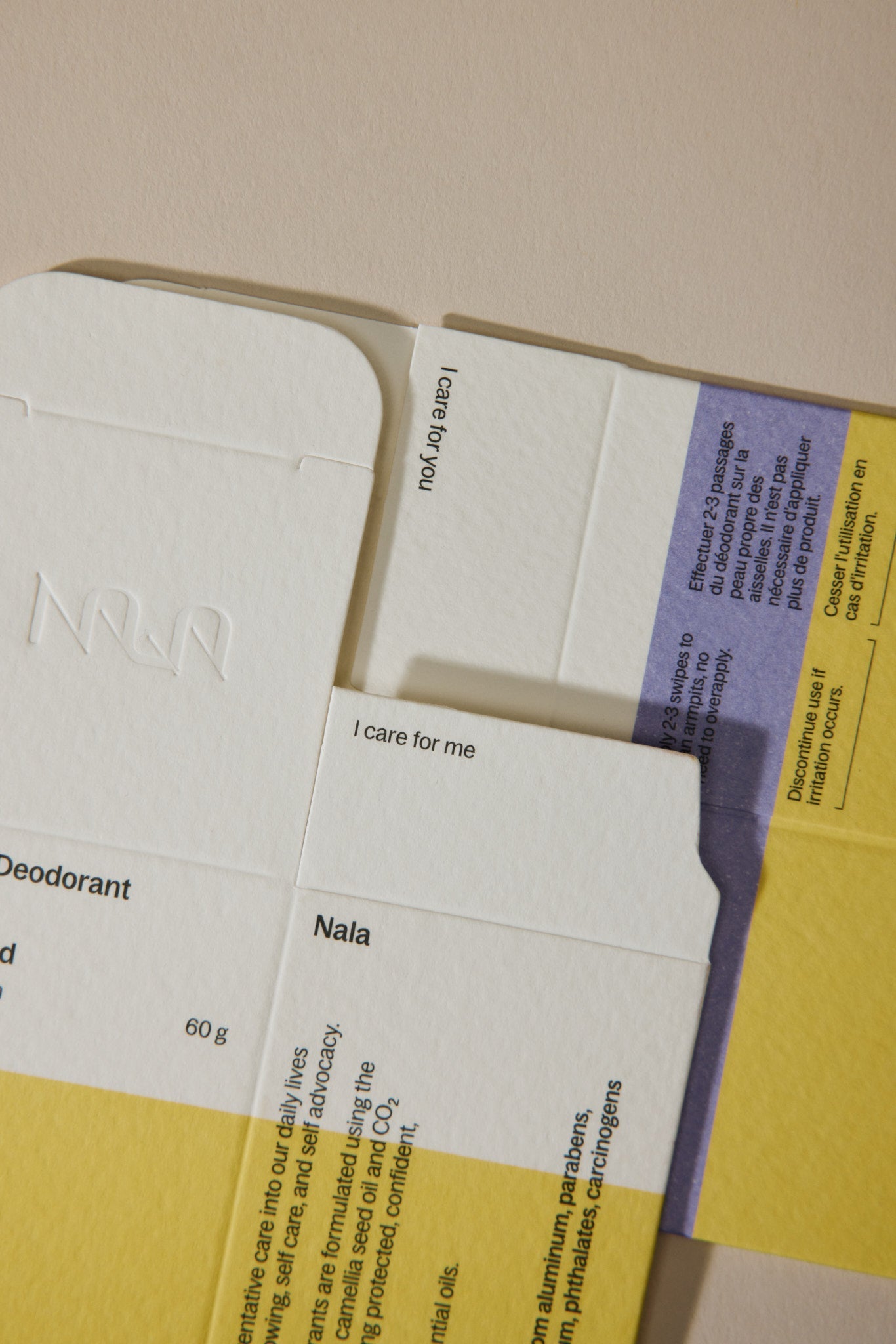You pick out a product off the shelf or tap the product page on a website, and heading to the ingredients list you immediately feel your heart rate increase. Maybe you start sweating and your anxiety kicks in. What does all of this even mean and how do I even begin to understand if it’s right for me?
Take a deep breath. We got this.
The government websites are a little overwhelming, but the list will give you the perfect insight into how to approach your buying habits:
- Read High to Low - All ingredients on products are listed in order of predominance (1). The ingredient used in the greatest amount is listed first, followed by the next ingredient, and the next, all in descending order. Psst. That means that if a product’s ingredients list starts with something like Propylene Glycol, then almost 50 per cent of that product is made with this toxic chemical, common in many drugstore deodorants.
- The 1% rule - Ingredients that have a concentration of 1 per cent or lower don’t need to be listed in any order from one another, as long as they come after those that are in higher than a 1 per cent concentration (3). What’s more, concentration amounts don’t need to be listed if they’re not medical (1). So while you may know which is at the top of the list, you’re still not sure exactly how much of that one ingredient is in the product you’re using.
- Trade secrets trump transparency - Like White Spot’s secret sauce, trade secrets don’t need to be listed on an ingredients label. In lieu of giving away what makes that one product super special, companies simply have to list “and other ingredients.”
- Fragrances can be a catch all - Oh fragrances, how they confuse us. Instead of having to list everything that makes up the fragrance aspect of a product, companies are simply required to write down “fragrance” (1). This means that things like formaldehyde and acetone could be bundled up in that “fragrance” statement. This is why we stick to only using essential oils in our free-from deodorants.
- Just because something has essential oils in it, doesn’t make it natural - Speaking of essential oils, remember that 1 per cent rule we mentioned above? Typically you’ll find essential oils at the bottom of an ingredients list, as their concentration is lower than 1 per cent in many beauty products (3). So when a brand claims they’re natural, make sure it’s for more than their essential oils.
- Contrary to popular belief, if you can’t pronounce it it doesn’t mean it’s bad for you - To confuse you one last time, ingredient names must be written in the form declared by the International Nomenclature for Cosmetic Ingredients (2). Huh? This was designed, more than five decades ago, to allow for unambiguous identification of ingredients. Do you find Tocopherol unambiguous? That’s Vitamin E, by the way. Our recommendation - look up the first few ingredients if you’re unsure what they are. You’ll soon be savvy at deciphering what is a chemical in disguise and what is simply the Latin word for a natural extract.
So what are we saying? Educate, educate, educate.
- Read this blog post. Bookmark this blog post. Print this blog post out, frame it, and hang it on your wall.
- When you’re interested in a product (or are curious about one you’re already using), head to the company’s website to find listed ingredients, or snap a photo of the packaging.
- Use this blog post to understand how to approach a product’s ingredients list, use this one to understand exactly what that ingredient is that you’re trying to pronounce, and then this one to understand why we’ve made things simple by being free-from.
Deep exhale. You’re an empowered shopper.
References:
- Center for Food Safety and Applied Nutrition. “Cosmetics Labeling Guide.” U.S. Food and Drug Administration, FDA, www.fda.gov/cosmetics/cosmetics-labeling-regulations/cosmetics-labeling-guide.
- Canada, Health. “Government of Canada.” Canada.ca, Government of Canada, 25 Nov. 2019, www.canada.ca/en/health-canada/services/consumer-product-safety/reports-publications/industry-professionals/labelling-cosmetics.html#eight1.
- Canada, Health. “Government of Canada.” Canada.ca, Government of Canada, 1 May 2012, www.canada.ca/en/health-canada/services/consumer-product-safety/reports-publications/industry-professionals/guide-cosmetic-ingredient-labelling.html.


